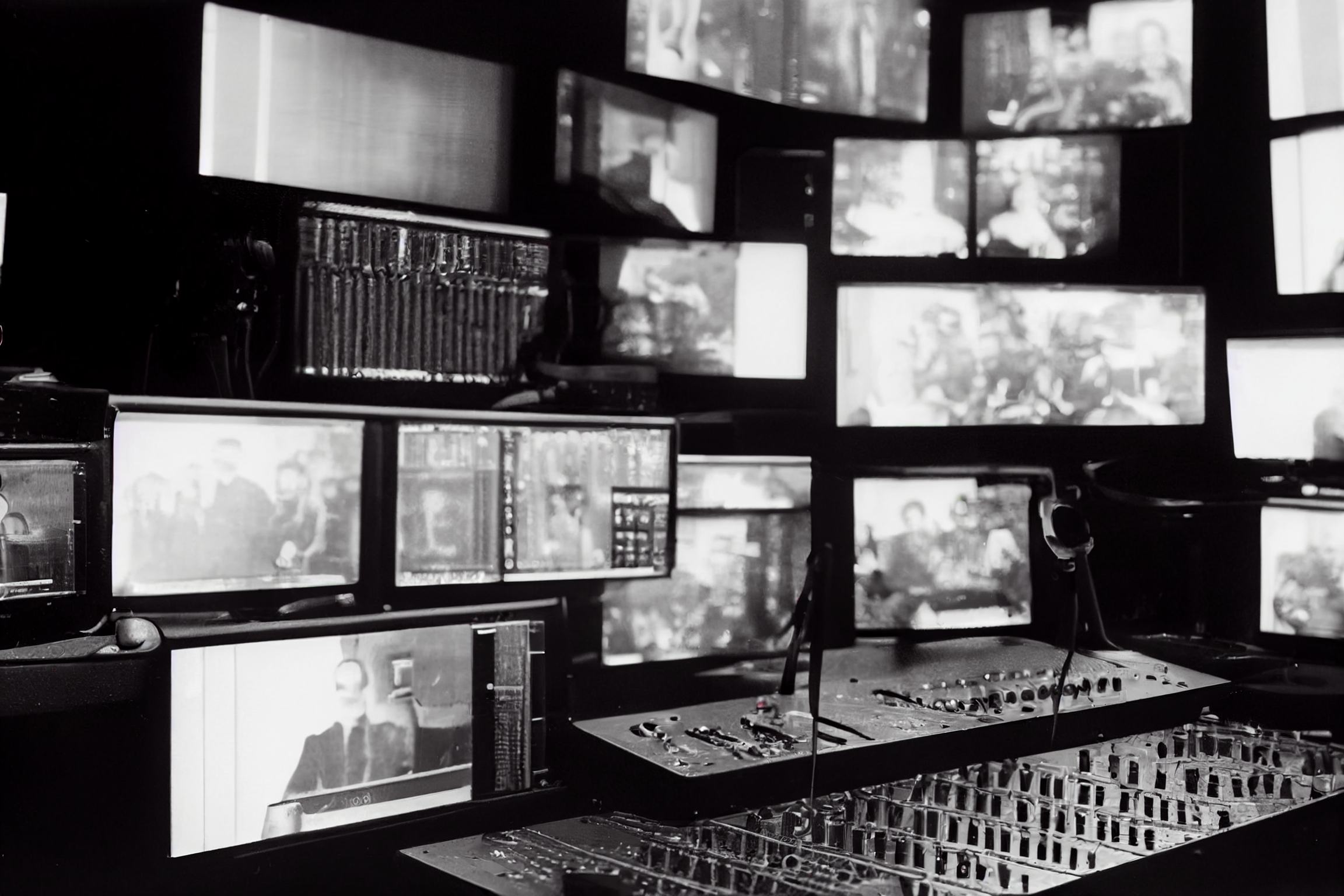The importance of media monitoring for informed decision making
In today’s competitive business landscape, staying ahead requires more than just keeping an eye on your competitors—it involves monitoring the media for a comprehensive understanding of industry developments and market trends. Leveraging the power of media monitoring software is crucial for companies striving to make informed decisions, protect their reputation, and seize valuable opportunities.
Importance of Media Monitoring for Informed Decision Making
Media monitoring has evolved into a fundamental practice, offering businesses a proactive approach to gathering crucial information. By staying abreast of media coverage, companies can extract valuable insights that directly impact their decision-making processes.
Spotting Opportunities and Anticipating Challenges
An exemplary use case for media monitoring is the ability to identify potential challenges and opportunities. For instance, a company can track competitors’ activities, such as the launch of new products, and adjust its strategies accordingly to maintain competitiveness and mitigate financial risks.
Protecting Your Company’s Reputation with Broadcast Monitoring Software
One of the pivotal benefits of media monitoring, especially broadcast media monitoring, is reputation management. Negative comments in online and traditional media can pose a threat to a company’s image. With the aid of media monitoring tools, businesses can swiftly detect and address negative sentiments before they escalate. Timely responses to dissatisfied customers, whether on social media or other platforms, can defuse issues and prevent them from becoming detrimental to the company’s reputation.
Identifying New Markets and Enhancing Market Research
Media monitoring transcends problem detection; it serves as a powerful tool for identifying opportunities and conducting thorough market research. For companies seeking to expand into new markets, media monitoring can pinpoint promising areas and highlight potential challenges, enabling a strategic and informed market entry.
Strategic Decision-Making and Consumer Insights
In the realm of launching new products, media monitoring acts as a valuable resource for gathering consumer insights and understanding market trends. By monitoring media channels, companies can align their product offerings with consumer needs, ensuring a more successful product launch.
Conclusion: Harnessing the Power of Media Monitoring
In conclusion, embracing media monitoring is indispensable for companies committed to informed decision-making and safeguarding their reputation. Whether uncovering insights about competitors, identifying market trends, or addressing issues proactively, media monitoring software is the key to staying ahead in the dynamic business environment. If you’re not already monitoring the media, now is the time to invest in the best media monitoring software and propel your business to new heights.
Benefits of media monitoring for a press office
If you are part of a press office, it is essential that you are aware of all the times clients are mentioned. Media monitoring by hand is time-consuming, so it’s best to use specialised tools. In this article, we will explore the benefits of media monitoring for a press office and why it is so important for your work.
What is media monitoring?
Media monitoring is the process of tracking and analyzing content that is published in different media, be it TV or radio broadcasts (or other channels) in streaming, digital newspapers, online magazines, websites, social networks, etc. The objective is to obtain information about a specific topic or company and to evaluate the reputation and impact of that information on the public.
In today’s online world, customers are accustomed to receive information about their actions almost instantaneously. That is why media monitoring is essential to keep clients informed about relevant news and trends in the industry, your media appearances, statements, the impact of your advertising campaigns and, in general, what is the general public’s sentiment towards your brand, service or company. In addition, it is a key tool that allows you to monitor reputation and detect any problems or crises, before they may arise.
Benefits of media monitoring:
1.Obtain relevant and updated information:
Media monitoring allows you to keep abreast of events, news and information, practically as they happen. This helps you make informed decisions and gives your clients a clear perspective on the current landscape.
2.Identify opportunities for your clients:
Media monitoring also helps you identify opportunities for your customers. For example, if you spot a trend in the market, you can report on how they can leverage it to their advantage. Also, if a news story breaks, you can use it to generate more exposure. You can leverage the news to create a press release or a social media campaign to increase their media presence. Finally, competitor monitoring also generates valuable insights for your clients about the actions or directions their immediate competitors are taking.
3.Reputation monitoring:
Another important benefit of media monitoring is that it allows you to monitor reputation and sentiment. If there are any problems or crises on the horizon, you can spot them quickly and take action to minimize their impact.

4. Evaluate the impact of your campaigns:
Having an efficient and flexible media monitoring tool is also useful for assessing the impact of your campaigns. You can monitor the success of your media campaigns and evaluate their impact on the target audience’s perception.
5.Identify trends and pattern:
The joint analysis of multiple data points over time (which a good monitoring system always stores) allows you to identify trends and patterns of opinion, consumption or others. With them you can design strategies or inform your customers to decide new courses of action or business. And you can also use this information to create communication strategies.
In short, media monitoring is an essential tool to facilitate the work of press offices. It helps you stay informed of all the essentials and, what’s more, because it’s AI algorithms, it allows you to monitor multiple channels at once in an unattended way and alerts you instantly, when there is something interesting to know or something has happened. The applications of media monitoring are limited only by your imagination and you can gain valuable information by monitoring the media, to apply to the benefit of your clients and your media agency.
What is media monitoring?
Media monitoring is a method of scanning public or private communication channels, such as television channels, radio, print publications, and the Internet, for mentions of specific keywords. The idea behind all this is to get an idea of the popularity of said keywords, in what contexts they are used and how often. Later we will see why. But first let’s take a brief look at the history of Media Monitoring to understand where it came from.
Media monitoring may seem like a recent discovery, now that we live in the information age, but it’s actually almost 200 years old. The first news clipping services appeared in the 18th century. Mainly used by companies at the time, their main objective was to read all the printed publications that fell into their hands, looking for specific keywords in which the client was interested.
With the advent of the Internet and other new technologies, monitoring of the media has become more complex and easier at the same time. The reason for the increase in difficulty is the explosion of television channels in the 90s and the exponential growth of content on the Internet. Now it was easier than ever to find information in a jiffy, but there was so much of it that it was completely unfathomable. Media Monitoring companies now needed their own spiders to roam the Web to find the information they needed, from the sites that each client was interested in, such as news sources, online newspapers, magazines, and the like.
How to monitor video?
Today, more than 70% of the data on the Internet is video. But the problem with video is that it falls into the category of unstructured data, just like audio (such as podcasts, for example). This means that the video cannot be easily analyzed to extract information from it. Because that’s another story. Hence, another of the tools that is having a great impact for the Media Monitoring business are the AI systems capable of analyzing the video, transcribing the audio, recognizing faces or objects that appear in the video and writing all this in a file of metadata text, which can be parsed by conventional means, like the rest of the text.


The purposes of media monitoring
What is the point of using media monitoring? For private companies, it can be useful to know how a certain product is being received, or how the latest scandal is spreading. But it can also be used to see how competitors are doing. For press agencies it is very useful to see how a certain campaign is working and how much coverage they are getting on certain issues. And television channels or production companies have their own needs.
IDENTIFY MENTIONS: Companies, organizations and even the public sector use media monitoring as a tool to identify mentions of their name, brand, product, service or executives or representatives. This is especially important in political campaigns or product launches.
CONTROL COMPETITORS: The private sector often tries to find out how competitors are doing, both in their successes and in their problems, in order to react accordingly or to compare their own results with those of those competitors.
MONITOR THE REPUTATION: A brand’s reputation is crucial for several reasons. It helps to understand how the communication department is doing, if its message is clear and accurate. It also helps to detect potential problems (for example, with unhappy customers), before they become a real one.
What information does media monitoring provide?
As with all complex data sets, the results are always only as good as the questions we are able to ask. This is one of the reasons data scientists are becoming increasingly popular in the field of media monitoring, because they can offer you insight you might not have thought of. However, most commercial programs offer you a series of tables and graphs to illustrate the results, in order to make them more understandable, regardless of the company profile that is consulting them (technical or business). These are some examples:
- Geographic information and distribution of mentions
- Frequency of mentions
- Time distribution of mentions
- Mention heatmaps
In conclusion, media monitoring is a process that allows you to track public or private communication channels, such as television channels, radio, print publications, and the Internet, and obtain information about the use of specific keywords to help companies, organizations, Videoma Monitor is an ideal solution.
The usefulness of media monitoring II
What is worth monitoring
and how do you get the information?
Media monitoring is an increasingly common way of obtaining information from public sources, in order to answer specific questions related to the image of a business, its performance, its competition or new trends. But how to choose what to monitor and what to do with the information obtained? These are the questions we are going to answer.
In the previous article we have already mentioned the main sources of public information: radio, TV, printed or digital press, social networks, podcasts, and streaming services that include news. The problem lies in making the most of the information accessed. When it comes to text (websites, forums, posts written on social networks) there is no problem, any current analysis system (of which there are dozens) is able to find keywords, relate them to each other and draw some conclusions or pass the material to a Big Data analysis system that does the hard work.
But what about video or audio elements? On YouTube alone, 720,000 hours of video are uploaded every day. That’s a lot of potential information that traditional systems can’t interpret. That’s why advanced media monitoring platforms like Videoma Monitor make it possible to analyze video and audio, making transcripts of everything that is said, with what is passed to a text medium, which can be processed by the aforementioned Big Data systems. But not only that. With face and object recognition systems, a whole set of extremely valuable metadata can be created to analyze and get more context from a video. This is the trend today in AV Broadcast, as video can add additional dimensions to the analytics being performed.
“Media monitoring is an extremely valuable source of information for gaining insights into economic, social and political aspects of current affairs.”
What information can you get?
As in all disciplines of data analysis, the information that can be obtained is limited only by the imagination of the researcher. In the specific case of media monitoring, following are some of the possibilities, but the uses are virtually unlimited:
- Number of mentions. This is one of the most common metrics and indicates how many times the searched information has appeared, what day and what time and, most importantly: how long it was or what fragment has been published.
- Potential or estimated reach. It’s the value that indicates how many people have been able to see the impressions that have appeared, in order to evaluate the success of a given campaign or statement.
Trending topics. It allows to show if the searched words are currently trending. - Share of Voice. This indicates what part of all current mentions belongs to the client being searched for, and what part belongs to the competition.
- Sentiment analysis. A somewhat more complex metric, which requires the intervention of AI to perform semantic analysis to find out with what tone and in what context the searched terms have appeared.
- Top profiles. Indicates who has spoken the most about the terms we are interested in, which allows us to assess the interest in the information and in which sectors it appears.
- Top locations. Similarly, this metric provides a list of the main locations where the topic under analysis is discussed.
- Top sources. And, to round off the information, with this KPI (closely related to the first one) it is possible to know which media have echoed the information the most.
“The data set that an advanced analytics application is capable of obtaining from simple public media input is spectacular and can answer very complex questions.”
Media Monitoring uses
With all the above information it is easy to see that the uses of media monitoring are practically unlimited. Not only in the area of communication and marketing, but also in security, politics, medicine, sociology and other fields it is important to know how a certain information is disseminated and by which media channel. Thanks to artificial intelligence and Big Data systems, digital media analysis is possible on a large scale and by linking hundreds or thousands of information sources.
Whether it’s discovering an emerging market trend, measuring the performance of sales or marketing efforts, analyzing the competition, monitoring reputation or mitigating potential crises, media monitoring can help. And today it is available to anyone, as technologies are so advanced that with minimal investment or even as an on-demand service, the desired results can be achieved. The time savings compared to traditional analysis is considerable, and it also makes it possible to improve services and the focus of public or press actions.
Historical monitoring
Strictly speaking, media monitoring, by its very nature, does not take into account historical data, but only what is happening right now. If the analyst needs to take into account trends or evolutions, you need to combine the data obtained through media monitoring with other historical data (preferably from the same channels to allow comparison) and perform a completely different analysis.
To learn more about the usefulness of media monitoring in today’s world, check out part I of this article from ISID.
The usefulness of media monitoring I
What is the point of monitoring media?
Media and advertising agencies could write entire volumes on this question. But, to put it in short: media monitoring is useful for knowing
- what is happening in the world,
- where a certain piece of information appears (news, statement, etc.),
- when it appears, how many times and to what extent.
From a press agency’s point of view, the last two are very valuable information, as it shows their clients how many impacts they have had on a given campaign, which is usually a very important KPI. Actually, media monitoring is nothing new, because it has been done for decades, although until not that long ago, the work consisted of making actual clippings from newspapers and magazines to show the client the appearance of their product or news. And there was a lot of watching TV, to note where something related to a campaign had been mentioned.
Today, in an age where absolutely everything leaves a digital footprint on the Internet, in the form of a blog, YouTube video or social network post, the job of media monitoring has become both simpler and more complicated. It’s simpler because information can be searched and accessed at any time, and appearances can be found with ease. The problem lies in the number of information sources that currently exist. Trying to build a comprehensive picture of the impact of a news item or advertisement is a daunting task because of the sheer amount of channels that exist.
And this is where automated media monitoring, based on artificial intelligence (AI), comes in. It would be completely unfeasible for a person to try to keep up with everything that is mentioned around certain keywords. And this is why monitoring systems were designed and developed by companies like ISID offering video monitoring software and radio and television monitoring software, and they are analysing all public information channels on a 24/7 basis and allow you to set alarms (or even more complex tasks) every time they discover the mention of some keyword.
“Media monitoring is an extremely valuable source of information for gaining insights into economic, social and political aspects of current affairs.”
Who may need media monitoring?
In addition to the obvious application that we have already mentioned for media or advertising agencies, to justify their existence and their good work, today there are many more sectors that may be interested in media monitoring:
- Commercial use. This use overlaps a lot with that of advertising agencies, since commercial, marketing or sales departments are the ones that usually hire agencies to advertise a product or service and monitor the success of the different actions. But it is also important to monitor the competition.
- Business/Finance. Although, a priori, it may seem that it is the same as the previous use, at a purely business level it is very important to be up to date with international news (especially in large companies), since relevant news can have an impact on the company, its finances, investments, etc. This is especially important at the macroeconomic level.
- Science. The scientific uses of media monitoring are virtually unlimited. From psychology and sociology to statistics, there is everything. But even branches such as physics, medicine or similar can be interested in monitoring what is being published, to keep up to date or to find synergies.
- Politics. Obviously, knowing the sentiment of the population with respect to a new law that has been enacted is of great value. As is knowing what a political opponent is doing or saying, to counter or mitigate possible attacks. Or, more passively, to know where statements just made by a member of the government have appeared, at what length they have been included, and whether they have been trimmed to cause bias.
- Security. Finally, in the field of traditional security, the monitoring of the usual communication channels (TV, Radio, Internet) can be of great value in certain investigations, especially if social networks and messaging systems (at least those that are not encrypted) are included.
- Intelligence. Even at a country scale, intelligence agencies can find a lot of valuable information in the combination of information from different channels, to assess possible potential dangers, irregular movements of people, etc.
Crawling as a source of information
Like Google, many media monitoring systems use spiders or bots to obtain information from selected media (text, audio or video publications). And, in a 24/7 loop, these spiders crawl the web and all other media to collect the requested information and perform permanent analysis, allowing the evolution of the different messages to be assessed over time.
Continue learning about this topic check out part II of this article from ISID.





